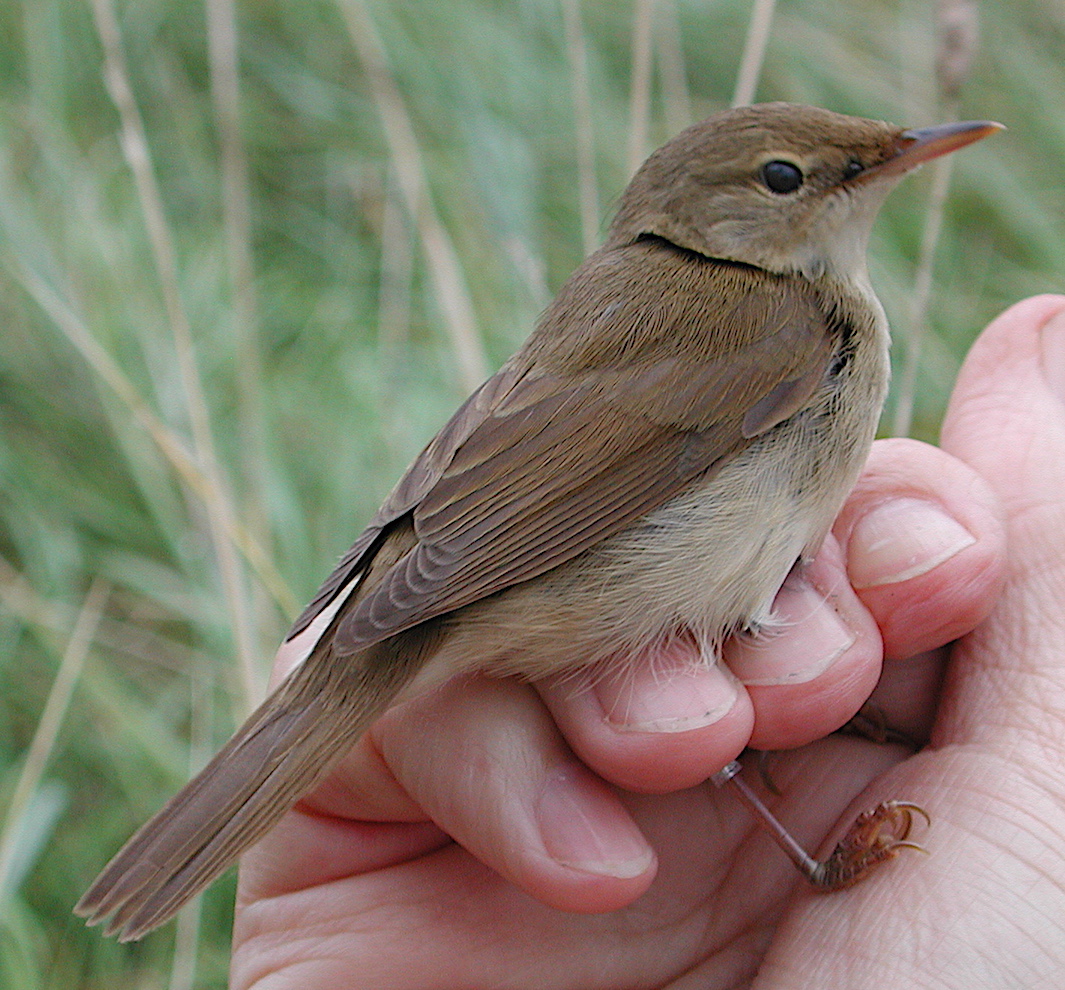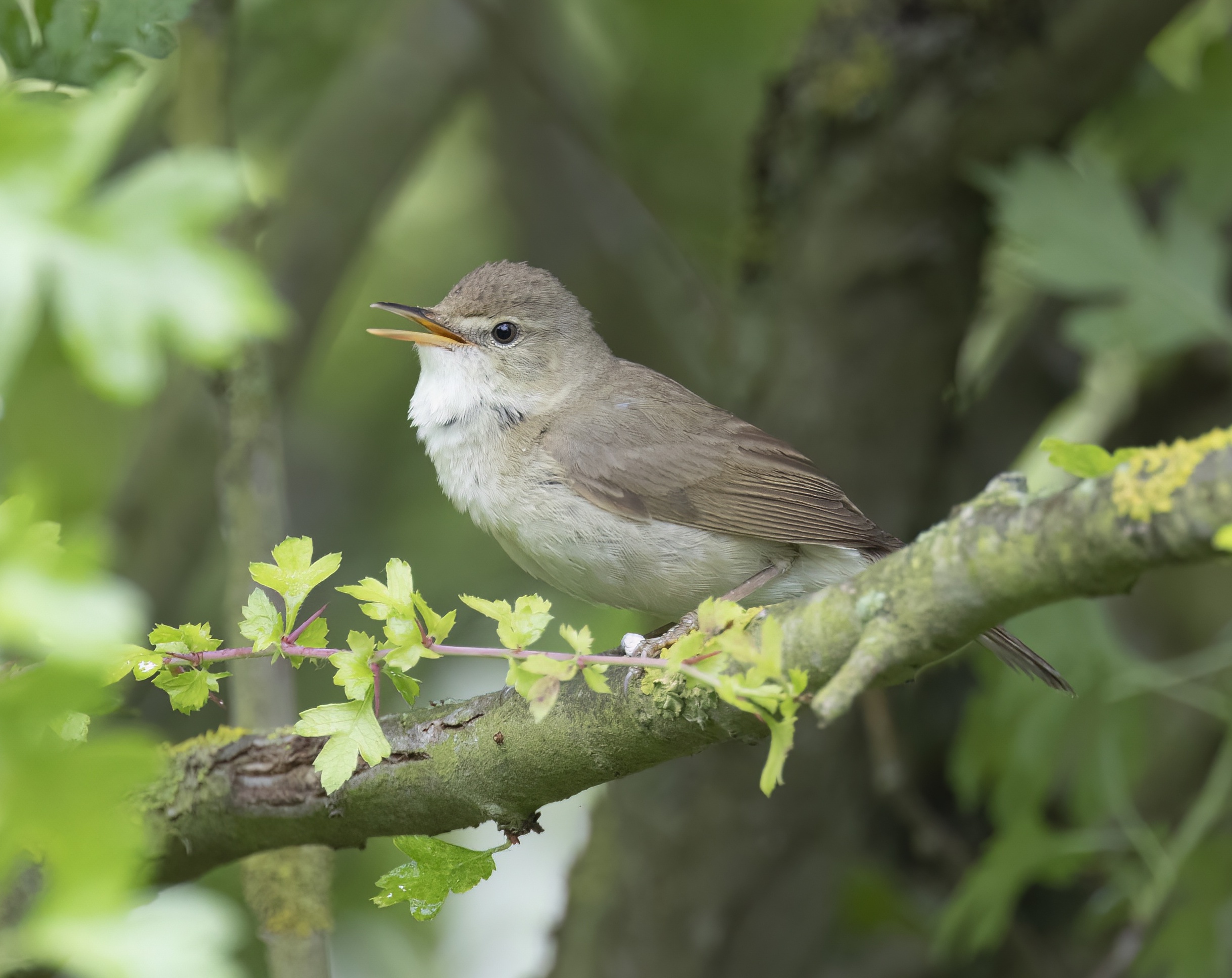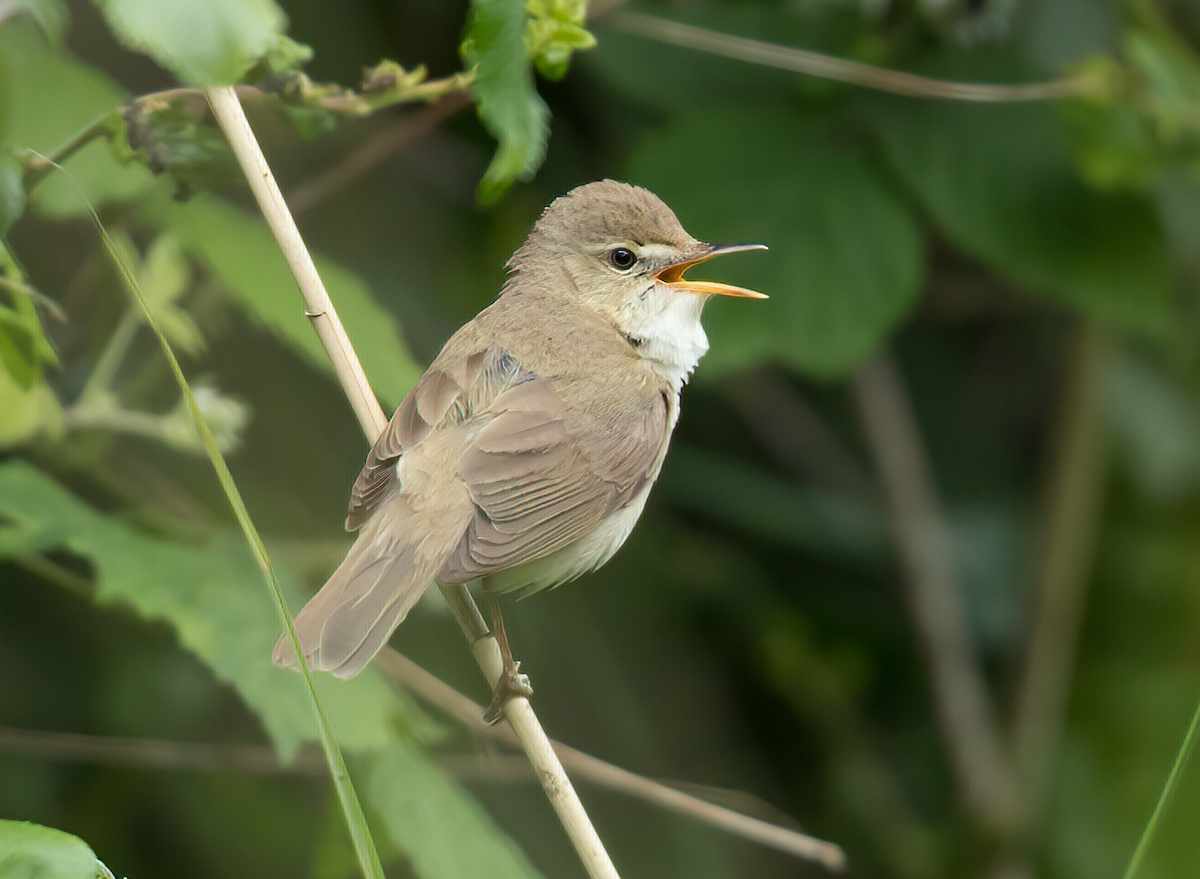Blyth's Reed Warbler Acrocephalus dumetorum
Vagrant. Northeast Europe.



A bird trapped and ringed in September 1991 was the first record, one of three in Britain that year. At the time, the species was unfamiliar to many, if not most UK observers and a full plumage description was taken together with comprehensive biometrics and wing formula. It was noted to be "..superficially Reed Warbler-like but with a very obvious supercoilium and pale lower mandible". Another was trapped and ringed in 2006 and a third well seen in the east dunes at Gibraltar Point in September 2014. A very popular singing male which performed at Far Ings NR in June 2020 for more than two weeks was the fourth record record and the first in spring. It frequented a reed-filled ditch and hedgerow; on it's breeding grounds it is not necessarily found close to water and is more arboreal than most members of genus. The species ceased to be considered by BBRC from 2015. In the period 1950-2017 there had been 242 in Britain although all modern records have occurred since 1979; there are about six per year but with recent significant increases.
| Site | First date | Last date | Count | Notes |
| Crook Bank, Saltfleetby-Theddlethorpe NNR | 03/09/1991 | 04/09/1991 | 1 | 1CY bird, trapped |
| Gibraltar Point NNR | 16/09/2006 | - | 1 | 1CY bird, trapped |
| Gibraltar Point NNR | 05/09/2014 | 06/09/2014 | 1 | |
| Far Ings NR, Barton-upon-Humber | 07/06/2020 | 21/06/2020 | 1 | Singing male |
| Anderby Creek | 16/10/2023 | - | 1 | |
| Gibraltar Point NNR | 28/09/2024 | 02/10/2024 | 1 | An elusive bird in the east dunes Buckthorn |
Finder’s report: Blyth’s Reed Warbler at Saltfleetby-Theddlethorpe NNR, September 3rd, 1991, first county record.
by A. D. Lowe
Note: account based on the original BBRC submissions. The record appeared in the Rarities Committee report for 1992, along with two other records for 1991. The RC (BBRC) commented that the three all turned up within one 31-day period and all three were examined in the hand. Identification and assessment made for hard work all around, especially to exclude the possibility of hybrids with Reed Warbler A. scirpaceus or Marsh Warbler A. palustris.
Circumstances
Between August 31st – September 14th, 1991, the Birklands Ringing Group went on their annual ringing trip to the Saltfleetby-Theddlethorpe Dunes NNR. During the fortnight we had sightings of Wryneck (3 occasions), Fieldfare and Redwing, with good numbers ringed of the common warblers and Pied Flycatchers, with a small number of Whinchats and Wheatears. The weather on the day of capture and the previous six days had been a high pressure over SE England moving into the North Sea before drifting over Scandinavia, producing E winds of between 10-20 km/h. with thick mist in the early mornings and late evenings.
At about 20.00hr. on September 3rd, 1991, two birds had been extracted from the mist-nets one of which was an Acrocephalus warbler which appeared pale with a light supercilium. The ringers present were struck by the paleness of the bird and were certain it was not a Reed Warbler. The wing formula was taken, and measurements checked against the ‘Identification guide to European passerines’ by Lars Svensson, and also the ‘Identification for Ringers 1: the genera Cettia, Locustella, Acrocephalus and Hippolais’ by Kenneth Williamson (June 1974). This confirmed to us that the bird was not a Reed Warbler, Acrocephalus scirpaceus, nor was it a Marsh Warbler, A. palustris; the wing formula also ruled out Paddyfield warbler, A. agricola. All measurements agreed with the wing formula of a Blyth’s Reed Warbler, A. dumetorum. We could not do a plumage description at that time because it was dark, and we were using artificial light. We decided to ring the Blyth’s Reed Warbler and roost it overnight.
Description
At daybreak a full wing formula and description were taken bearing in mind that we wanted to release the bird as quickly as possible. Afterwards the bird was released at 06.45 hr. on September 4th. It was seen to flick its tail a couple of times before disappearing into thick undergrowth.
Head – whitish supercilium on front of eye, joining with white eye ring, fading out just behind the eye.
Upperparts – dull, uniform olive-brown, with an olive tinge on the mantle. Shoulders and nape tinged greyish. Rump slightly warmer in colour.
Tail – dull brown; tail feathers showed nest damage.
Wings – uniform dull brown; alula lighter on outer edge.
Underparts – throat white; breast and flanks buffish white, browner on the flanks. Underparts much cleaner white than Reed Warbler.
Bare parts – tarsus dark with a bluish-grey tinge; feet grey, soles of feet greenish. Upper mandible dark brown, lower edges lighter. Lower mandible horn with pinkish hue and a darker tip. Mouth yellow. Eyes dark brown.
Biometrics Wing 63 mm., tail 53 mm., tarsus 20.5 mm.
Wing point = 3rd (4th), emarginated = 3rd, 4th (5th slight)
Notch – 2nd primary = 12 mm. = SS to wing points = 12 mm; 3rd primary = 8 mm.
Primaries Primaries 3 and 4 being very close to both being wing point. 4th was just smaller but not by much. No wear, very fresh.
Age Juvenile (3).
Reference
Rogers, M. J. and the Rarities Committee (1993). Report on rare birds in Great Britain in 1992. British Birds 86 (10): 447-540.

